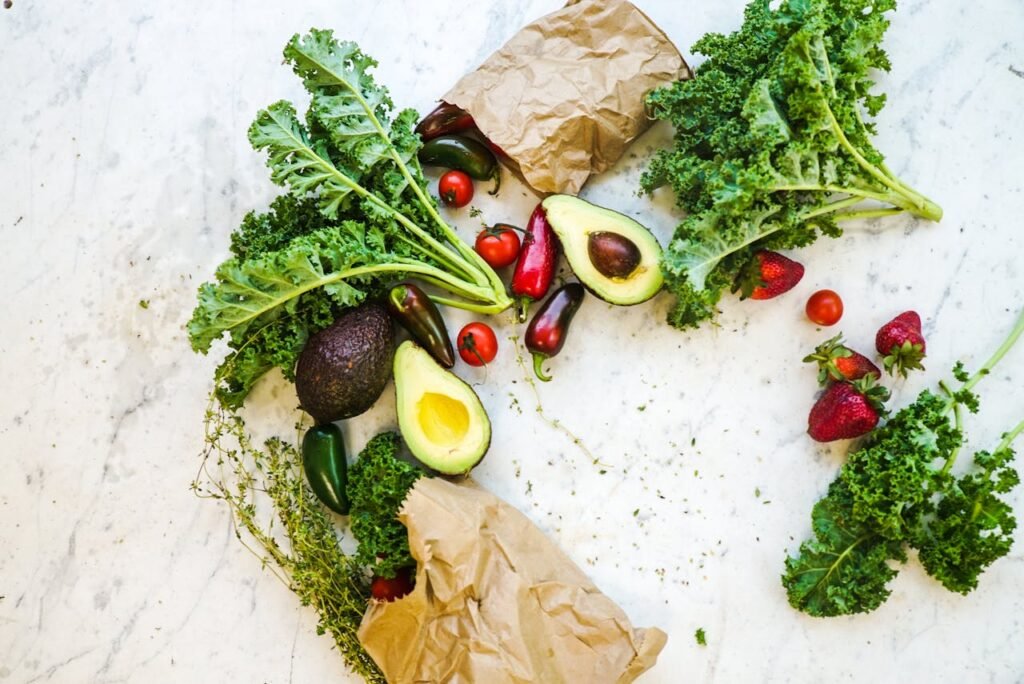The Ketogenic (Keto) diet has taken the world by storm, praised for its effectiveness in promoting weight loss, stabilizing blood sugar, and even boosting mental clarity. But what exactly is the Keto diet, and how can you harness its benefits? In this guide, we’ll dive deep into the principles of the Keto diet, covering how it works, what you should eat, potential benefits and side effects, and tips to make it work for you.
Table of Contents
- What is the Keto Diet?
- Origins and Purpose
- How Does Keto Work?
- The Science of Ketosis
- Ketosis and Energy Sources
- Ketones Explained
- How to Achieve Ketosis
- Benefits of the Keto Diet
- Weight Loss and Fat Burning
- Improved Blood Sugar and Insulin Sensitivity
- Enhanced Cognitive Function and Mental Clarity
- Other Health Benefits
- Potential Risks and Side Effects
- The Keto Flu
- Digestive Issues and Nutrient Deficiencies
- Long-Term Concerns
- Keto Diet Food List: What to Eat and Avoid
- Allowed Foods
- Foods to Limit or Avoid
- Types of Keto Diets
- Standard Keto Diet (SKD)
- Cyclical Keto Diet (CKD)
- Targeted Keto Diet (TKD)
- High-Protein Keto Diet
- How to Get Started with Keto
- Calculating Your Macros
- Sample 7-Day Meal Plan
- Keto-Friendly Snacks and Drinks
- Tips for Success on the Keto Diet
- Managing Cravings and Hunger
- Staying Hydrated and Electrolyte Balance
- Tracking Progress and Staying Motivated
- Frequently Asked Questions about the Keto Diet
- Can You Build Muscle on Keto?
- Is the Keto Diet Safe for Everyone?
- How Long Should You Stay on Keto?
- Conclusion: Is Keto Right for You?
1. What is the Keto Diet?

Origins and Purpose
The Ketogenic diet was originally developed in the 1920s as a treatment for epilepsy. Researchers discovered that a low-carbohydrate, high-fat diet could reduce seizures in patients by changing the body’s primary fuel source from glucose to ketones. Today, Keto is primarily used as a weight-loss tool but has also gained popularity for its potential to improve metabolic health.
How Does Keto Work?
The Keto diet is a low-carb, high-fat diet with moderate protein intake. By drastically reducing carbohydrate intake, the body enters a state called ketosis, where it burns fat for fuel instead of carbs. The goal is to limit carbs to about 5–10% of daily calories, moderate protein intake, and fill the remaining calories with healthy fats.
2. The Science of Ketosis
Ketosis and Energy Sources
In a standard diet, carbohydrates are converted into glucose, the primary energy source for the body. On Keto, carbohydrate intake is reduced, leading the body to use stored fat for energy instead. This shift in fuel source is what puts the body into ketosis.
Ketones Explained
When the liver breaks down fatty acids during ketosis, it produces ketone bodies, including beta-hydroxybutyrate (BHB), acetoacetate, and acetone. These ketones replace glucose as the primary energy source, fueling the brain, muscles, and other organs.
How to Achieve Ketosis
Achieving ketosis usually takes 2–4 days on a strict low-carb diet. Reducing carb intake to below 20–50 grams per day and increasing healthy fats helps expedite ketosis. Exercise and intermittent fasting can also help deplete glycogen stores and push the body into ketosis faster.
3. Benefits of the Keto Diet

Weight Loss and Fat Burning
One of the biggest appeals of Keto is its ability to promote fat loss. Because it shifts the body into fat-burning mode, Keto can lead to rapid weight loss, particularly in the form of fat rather than muscle. The high-fat content also keeps you feeling full longer, which helps reduce calorie intake naturally.
Improved Blood Sugar and Insulin Sensitivity
For people with insulin resistance, metabolic syndrome, or type 2 diabetes, the Keto diet can help improve blood sugar levels. Lower carb intake reduces blood sugar spikes, and ketones have a stabilizing effect on blood glucose, promoting better insulin sensitivity.
Enhanced Cognitive Function and Mental Clarity
Ketones are a more efficient fuel source for the brain than glucose. Many Keto dieters report increased focus, better concentration, and mental clarity. This effect makes Keto appealing to people looking to improve cognitive function and reduce brain fog.
Other Health Benefits
Research has shown that the Keto diet may reduce the risk of cardiovascular disease by lowering triglycerides and increasing HDL (good cholesterol). It may also help reduce inflammation and oxidative stress, both of which are associated with many chronic illnesses.
4. Potential Risks and Side Effects
The Keto Flu
When transitioning to Keto, many people experience flu-like symptoms called the “Keto flu.” This occurs as the body adapts to burning fat instead of glucose and can cause fatigue, headaches, dizziness, irritability, and muscle cramps. The Keto flu typically lasts for about a week.
Digestive Issues and Nutrient Deficiencies
The reduction in high-fiber foods like whole grains, fruits, and legumes can lead to digestive issues, such as constipation. Additionally, because many nutrient-dense fruits and vegetables are limited, there is a risk of deficiencies in vitamins like C, B, and folate.
Long-Term Concerns
While short-term studies on Keto show positive results, the long-term effects are less clear. Potential issues include the risk of elevated LDL (bad cholesterol) and kidney strain from high protein intake. Regular monitoring with a healthcare provider is recommended for long-term Keto dieters.
5. Keto Diet Food List: What to Eat and Avoid

Allowed Foods
- Proteins: Beef, chicken, pork, fatty fish (like salmon), eggs
- Fats: Avocado, olive oil, coconut oil, butter, ghee, nuts, and seeds
- Vegetables: Leafy greens, broccoli, cauliflower, zucchini, bell peppers
- Dairy: Cheese, full-fat yogurt, heavy cream (in moderation)
- Fruits: Small amounts of berries like strawberries, blueberries, and blackberries
Foods to Limit or Avoid
- Carbohydrates: Bread, pasta, rice, grains, starchy vegetables (like potatoes)
- Sugars: Sugary drinks, candy, desserts, honey, maple syrup
- High-Carb Fruits: Bananas, apples, oranges, and other fruits high in sugar
- Processed Foods: Junk food, processed meats, and foods with added sugars
6. Types of Keto Diets
Standard Keto Diet (SKD)
This is the most common version of Keto, with a strict macronutrient ratio: high fat (70–75%), moderate protein (20%), and very low carbs (5%).
Cyclical Keto Diet (CKD)
CKD alternates between days of Keto eating and high-carb intake (usually 5 Keto days, followed by 2 high-carb days). This approach may be suitable for athletes who need carbs for high-intensity training.
Targeted Keto Diet (TKD)
TKD allows carbs around workouts to provide energy for exercise, ideal for those who need fuel for high-performance activities.
High-Protein Keto Diet
This is similar to the Standard Keto Diet but includes more protein (around 35%). It’s often recommended for those looking to preserve muscle mass while losing weight.
7. How to Get Started with Keto

Calculating Your Macros
To start Keto, calculate your daily macronutrient needs based on your weight, activity level, and goals. Aim for a macronutrient breakdown of about 70-75% fat, 20% protein, and 5% carbs.
Sample 7-Day Meal Plan
Here’s a simple meal plan to get you started:
- Day 1: Breakfast – scrambled eggs with avocado; Lunch – chicken salad with olive oil; Dinner – grilled salmon with spinach
- Day 2: Breakfast – chia pudding with coconut milk; Lunch – tuna salad lettuce wraps; Dinner – beef stir-fry with zucchini noodles
Keto-Friendly Snacks and Drinks
- Snacks: Hard-boiled eggs, cheese slices, nuts, olives, beef jerky
- Drinks: Water, herbal tea, black coffee, sparkling water
8. Tips for Success on the Keto Diet
Managing Cravings and Hunger
Choose high-fat, low-carb snacks to keep you full between meals, and focus on whole foods rather than processed Keto products.
Staying Hydrated and Electrolyte Balance
Drink plenty of water and consider supplements for electrolytes like magnesium, potassium, and sodium to avoid cramps and dehydration.
Tracking Progress and Staying Motivated
Use a tracking app to monitor your macros and ketone levels if possible. Celebrate non-scale victories like improved energy and mental clarity to stay motivated.
9. Frequently Asked Questions about the Keto Diet

Can You Build Muscle on Keto?
Yes, with sufficient protein intake and strength training, it is possible to build muscle on Keto, though progress may be slower than on a higher-carb diet.
Is the Keto Diet Safe for Everyone?
Keto may not be suitable for everyone, particularly those with kidney disease, liver conditions, or a history of disordered eating. Consult with a healthcare provider before starting.
How Long Should You Stay on Keto?
Keto can be followed short-term or long-term, but its sustainability varies by individual. Many people cycle on and off Keto, while others use it as a permanent lifestyle.
Conclusion: Is Keto Right for You?
The Keto diet offers substantial benefits for weight loss, blood sugar management, and mental clarity, but it also comes with challenges. Deciding if Keto is right for you depends on your health goals, dietary preferences, and ability to maintain the diet’s restrictions. Consulting with a healthcare provider can help determine if Keto is a good fit, especially if you have underlying health conditions.
With careful planning, the Keto diet can be an effective tool for achieving a range of health and wellness goals. Remember that long-term success on Keto is about consistency, balance, and tuning into your body’s needs.

